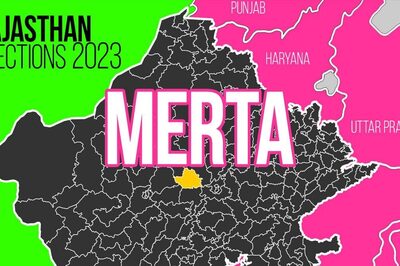
views
When house hunting, the price of homeowners insurance probably isnt top of mind. But homes with hidden risks can make getting coverage difficult, expensive or both. Learning how to identify them could save you a bundle.
This could be a particularly important concern for first-time homebuyers and those moving from cities to suburban or rural areas who may not be aware of common hazards, says Jennifer Naughton, risk consulting officer for North America for Chubb, an insurance company.
Three out of 10 city dwellers told a Chubb survey in early August that they were considering moving out of the city because of the novel coronavirus outbreak. Meanwhile, the number of first-time homebuyers in the first half of 2020 rose 4% compared to a year earlier as lower interest rates made mortgages more affordable, according to Genworth Mortgage Insurance.
WHERES THE NEAREST FIRE HYDRANT?
A homeowners insurance premium can depend in part on distance to the nearest fire hydrant and fire station, Naughton says. Homes that are on narrow roads or otherwise difficult for fire trucks to access also could be more expensive to insure.
If they have to cross over a bridge, its not only a consideration of can a car go over that bridge, but also can a fire engine, she says.
Some homes are at such high risk of wildfires and severe weather hurricanes, tornadoes, windstorms and hail that private companies wont insure them. Without insurance, you cant get a mortgage, so youd need to turn to state-run risk pools such as Beach and Windstorm Plans or Fair Access to Insurance Requirements Plans, better known as FAIR. These policies typically cost more and cover less than regular homeowners insurance.
Also, many homeowners policies in storm-prone areas have hurricane deductibles that are higher than the normal deductible, says Loretta Worters, vice president of media relations for the Insurance Information Institute, a trade group. Instead of paying the first $500 or $1,000 of a claim out of pocket, you may have to pay 1% to 5% of the homes value before coverage kicks in.
Talking to the neighbors and a local insurance agent can give you a better idea of what costs you might face.
WATER DAMAGE IS A BIG DEAL
Getting coverage for an older house with outdated wiring, heating systems or plumbing can be a challenge as well because of the risk of fire or water damage. Burst pipes and leaky water lines are among the biggest causes of water damage, which costs insurers and homeowners billions of dollars a year.
Homebuyers may be able to lower their insurance costs by updating those systems and by installing water sensors or a whole-house monitoring system, which shuts off the water supply if a leak is detected, Naughton says. Those systems can range from $600 to several thousand dollars, she says.
Flood risk is also a concern, Naughton says. Flooding isnt covered by regular homeowners insurance policies, and typically only homes in the highest-risk zones are required by mortgage lenders to buy special flood policies. But the federal governments flood maps may understate the risk to many properties, especially as hurricanes get stronger and bring intense rainfall along with larger storm surges.
Were seeing coastal flooding thats going in quite a bit, Naughton says. People who previously didnt consider flood insurance should because of the rain aspect as well as the surges.
Again, talking to the neighbors and a local insurance agent can help you assess the potential costs. You can get quotes for flood insurance from the National Flood Insurance Program as well as a few private insurers.
EARTH-SHAKING RISKS
The U.S. Geological Survey says 16 states are at high risk for a damaging earthquake in the next half-century: Alaska, Arkansas, California, Hawaii, Idaho, Illinois, Kentucky, Missouri, Montana, Nevada, Oregon, South Carolina, Tennessee, Utah, Washington and Wyoming.
Earthquakes are another hazard excluded from homeowners policies, although some private insurers offer earthquake policies, and people in the Golden State can buy coverage from the California Earthquake Authority. Deductibles range from 5% to 25% of the policy limit.
Certain types of houses may be at particular risk of earthquake damage, including those built before 1980 that have a stem wall a wood-framed first floor that rests on a concrete perimeter or a cripple wall, which is a short wooden wall between the foundation and the wood-framed first floor. Both types can be made more secure by anchoring them to their foundations with bolts and braces. Post-and-pier houses, which rest on pilings rather than on a continuous foundation, would need to have a concrete foundation created to make them safer.
Living spaces above garages or other large openings, also known as soft story buildings, and homes on steep hillsides should be evaluated by structural engineers for their vulnerability to damage.
Obviously, theres no such thing as a risk-free house, and you may decide that youre willing to pay the price of higher insurance or mitigation costs. But thats a choice you should make before you buy, rather than finding yourself stuck with a bill after its too late.
People should walk into these situations with eyes wide open, Naughton says.
_____________________________________
This column was provided to The Associated Press by the personal finance website NerdWallet. Liz Weston is a columnist at NerdWallet, a certified financial planner and author of Your Credit Score. Email: [email protected]. Twitter: @lizweston.
RELATED LINK:
NerdWallet: Homeowners Insurance: What It Is and What It Covers http://bit.ly/nerdwallet-homeowners-insurance
Disclaimer: This post has been auto-published from an agency feed without any modifications to the text and has not been reviewed by an editor



















Comments
0 comment